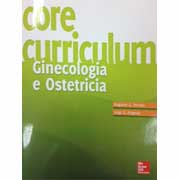37. Application of lung conditioning of prematurely delivered baboon fetuses
XI European Congress of perinatal medicine, Roma, April 10-13, 1989
(in coll. Solca.M., Kuehl.T.J., Farina.C., Coalson.J.J., Lurin.J.L., de Lemos.R.A.)
Summary: We investigated changes of lung elastic properties in fetal baboons prematurely delivered by cesarean section when subjected to 10 min of lung conditioning, which consists of sustained inflation to 35 cm H2O followed by CPAP at 15-20 cm H2O, while gas exchange is maintained by the natural in situ placenta. Previous studies show that in 128-134 d gestation lambs conditioning can increase lung compliance: if it exceeded 0.2 ml/cm H2O/Kg after 10 min, mechanical ventilation became possible without resultant severe RDS. We studied 5 premature fetal baboons at 140 days (range 137-143) gestation. Two fetuses received CPAP at 13 and 17 cm H2O without compliance changes. In 3 animals CPAP was raised to 20 cm H2O and their compliance improved moderately. However, it remained low, compared to lamb data: it exceeded the suggested cut off limit in only one baboon (0.229 ml/cm H2O/Kg), while it was 0.173 ml/cm H2O/Kg (delta 0.003) in others. The clinical course on mechanical ventilation during 24 h after delivery correlated with the compliance: animals with the lowest values had poor PaO2 on Fi O2=1.0 and developed hyaline membranes. The animal with the highest compliance had initial improvement, and then stabilized, althout it still had abnormal pulmonary function. These results suggest that lung elastic properties of premature baboon at 140 d and lamb at 130 d gestation are different. Therefore, their comparison as equivalent model of human RDS is incorrect. Overall, the clinical course on mechanical ventilation may have been smoother with increasing DI-20, but the capability of such an index to accurately predict freedom from RDS, or the effectiveness of lung conditioning in preventing RDS has not yet been established in the premature baboon model.
